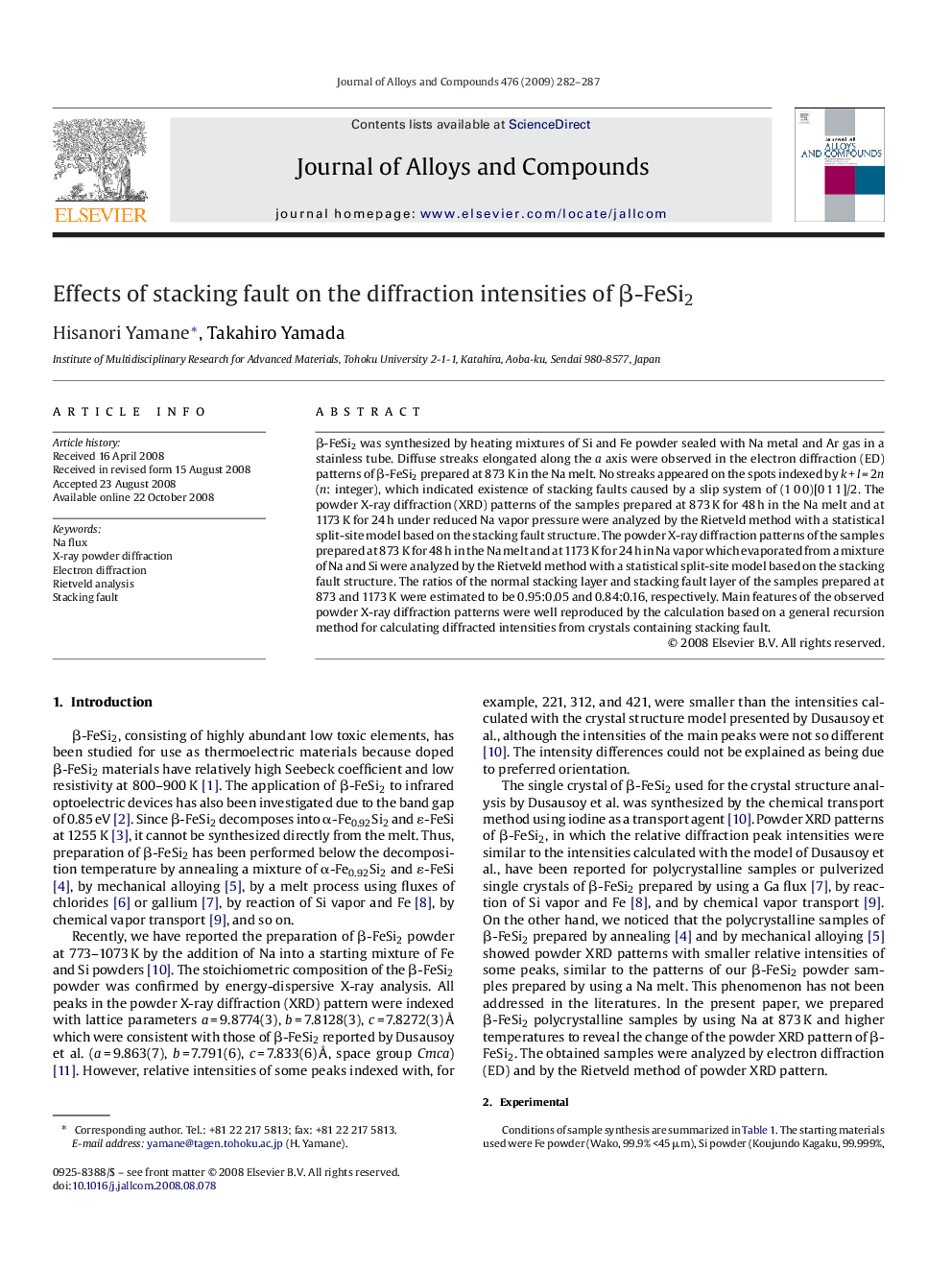| Article ID | Journal | Published Year | Pages | File Type |
|---|---|---|---|---|
| 1622557 | Journal of Alloys and Compounds | 2009 | 6 Pages |
Abstract
β-FeSi2 was synthesized by heating mixtures of Si and Fe powder sealed with Na metal and Ar gas in a stainless tube. Diffuse streaks elongated along the a axis were observed in the electron diffraction (ED) patterns of β-FeSi2 prepared at 873 K in the Na melt. No streaks appeared on the spots indexed by k + l = 2n (n: integer), which indicated existence of stacking faults caused by a slip system of (1 0 0)[0 1 1]/2. The powder X-ray diffraction (XRD) patterns of the samples prepared at 873 K for 48 h in the Na melt and at 1173 K for 24 h under reduced Na vapor pressure were analyzed by the Rietveld method with a statistical split-site model based on the stacking fault structure. The powder X-ray diffraction patterns of the samples prepared at 873 K for 48 h in the Na melt and at 1173 K for 24 h in Na vapor which evaporated from a mixture of Na and Si were analyzed by the Rietveld method with a statistical split-site model based on the stacking fault structure. The ratios of the normal stacking layer and stacking fault layer of the samples prepared at 873 and 1173 K were estimated to be 0.95:0.05 and 0.84:0.16, respectively. Main features of the observed powder X-ray diffraction patterns were well reproduced by the calculation based on a general recursion method for calculating diffracted intensities from crystals containing stacking fault.
Related Topics
Physical Sciences and Engineering
Materials Science
Metals and Alloys
Authors
Hisanori Yamane, Takahiro Yamada,
